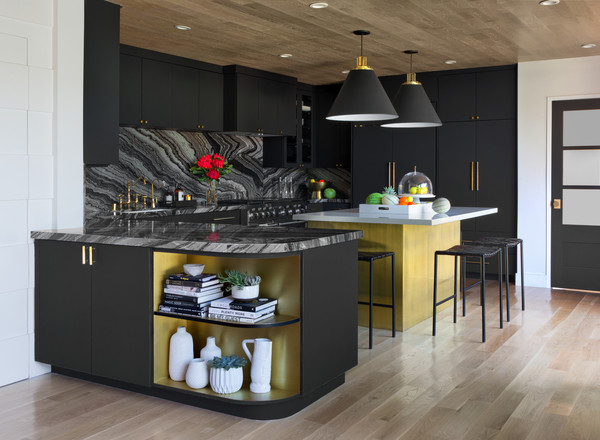

OPEN SIDEBAR →
On the Blog
Categories
Before & After
SERVICES
INTERIOR DESIGN
Lifestyle
Seasonal Decor
← BACK TO SITE
← BACK TO SITE
Designer Series 02: What to look for when hiring an Interior Designer
February 21, 2017
This post is a continuation of a series of posts from the summer. As much as we wanted to keep the Designer Series a monthly occurrence for its duration, we put it on hold to focus on our valued clients. If you’re following us, you’ll know we moved into Old Town Alexandria and also have grown the team over the fall and winter months, so we’ve been quite busy! In Designer Series 01 Part 1, we shared the benefits of of hiring professionals to help you with projects, DIY or otherwise. Then in the Designer Series 01 Part 2, we discussed projects involving more planning and construction.
If you’re considering working with an interior designer, it’s important to know a little bit about the basics so that you can make an informed decision. The following are answers to a handful of questions designers get asked regularly.

What is the difference between an interior designer and an interior decorator?
Both interior designers and decorators possess the desire and ability to make spaces in homes or buildings more beautiful. An interior decorator primarily addresses the cosmetic concerns of a space. They may have a good eye for design and some working knowledge of the design industry, as well as the ability to help clients select furnishings and finishes. However, this is only the tip of the iceberg. Interior designers are able to delve deeper into the inner workings of design. They envision, plan, and create spaces for clients that are stylish and functional according to their clients’ specific needs. Certified interior designers will have extensive training and experience in their chosen field, enabling them to consider all possibilities and limitations of a given space. They’re knowledgeable about building codes, health and life safety, occupancy, accessibility, and space planning requirements. If you have a project that involves a lot of planning, hiring an interior designer is a wise investment.
What are the requirements to become a certified interior designer?
In order to become a certified interior designer, you must pass a 3-part exam offered twice a year that’s administered by the National Council of Interior Design Qualification (NCIDQ). In order to be eligible to take the NCIDQ exam, you must have completed a Bachelors degree in relevant coursework and two years of experience working under a registered architect or a certified interior designer.
How do I know when to hire an interior designer?
If you don’t have the time, know how, or experience to devise and execute a plan for your space, and there’s room in your budget, hiring a professional is the way to go! There are so many considerations you need to take into account when planning a space: cost, timeline, construction, plumbing, electrical, hardware, furniture and finish selection, purchasing, delivery and installation, to name a few. A designer can coordinate and manage it all and can be brought in at any point during your project, although the beginning is preferable.
How do I find an interior designer who will be a good match?
Word of mouth and referrals are great ways to find a designer you’ll like. If any of your friends, family, or colleagues have worked with one before and had a great experience, don’t hesitate to ask for the designer’s info! You can also, of course, search online. When considering an interior designer, be sure to take a look at his or her past work, focusing on both style and function. Some designers specialize in a particular aesthetic. If you want a sleek and modern space, instead of hiring a designer whose work is traditional and ornate, it may be wise to look a little further. You can schedule phone calls or initial consultations to get a better feel for whether you want to work with someone. Take some time to gather images of your favorite styles and items from blogs, websites, and magazines to use as visual aids. If, for whatever reason, a particular designer can’t take on your project, he or she may be able to steer you towards someone who can.

What is the breakdown of costs?
People often fear that hiring an interior designer will be too costly, but many design services are well within reach and worth the investment. If you can’t afford to hand off an entire project to a designer, you can hire one to help you with specific parts, like sourcing furniture or selecting paint colors and finishes. Not all designers use the same fee structures, so it pays to know which is the most cost-effective for your specific project. Designers might charge an hourly rate of $100-$500 or more, a flat fee that encompasses the project as a whole, or a percentage of total costs. Designers may also choose to keep the difference between their designer discount and the retail price on purchased items as their fee. Overall, your choice of a designer depends on what your budget and needs are.
What is full service interior design?
It’s exactly that! The “works,” if you will. An experienced designer will have trusted service providers up his or her sleeve with whom they’ve worked on other projects. Your designer can provide referrals for general contractors, movers, organizers, etc., and will work alongside them throughout your project to ensure that everything runs smoothly and according to plan. Your designer will see your project through from start to finish, informing you of its progress and presenting you with ideas along the way. Sometimes, full service design includes additional concierge-type services, like sending someone to your home to supervise an appliance repair. Oftentimes, if your designer is a trusted service provider, he or she will have a key to your home to oversee installations or construction during the day when you’re out of the house.
What makes a good client?
Making significant changes to your home can cost you a lot of time and money, and sometimes you’ll come across unforeseen obstacles. It’s stressful! And your interior designer knows that. Part of being a good client is having a general understanding that Rome wasn’t built in a day. Don’t let a small hiccup send you spiraling! Not everything can be predicted, but your designer will work things out should an issue arise. Clear communication right off the bat keeps the project moving forward, so be as detailed as you can about your aesthetic preferences and how you plan to use the space. Since there can be long lead times on furniture and materials, it is important to make timely payments so that shipments are not delayed. Trust us, if we could snap our fingers and have everything arrive at once, we would! Lastly, be sure to keep a positive attitude and an open mind. Your designer may come up with unique ideas inspired by you and your space that you hadn’t thought of before!
Written and edited by Emilie Kyle and Cassandra Reinhart
Featured

Awesome new service announcement for your kitchen or bathroom remodel.

How To, Lifestyle, Design Partners, Interior Design, Services
How To, Lifestyle, Design Partners, Interior Design, Services
How To, Lifestyle, Design Partners, Interior Design, Services
How To, Lifestyle, Design Partners, Interior Design, Services
Spring is just around the corner and we want to be sure you enjoy the weather by getting your spring checklist taken care of!
Schedule
How To, Lifestyle, Design Partners, Interior Design, Services
How To, Lifestyle, Design Partners, Interior Design, Services

Interior Design, How To, Services, Restaurant Design
Interior Design, How To, Services, Restaurant Design
Interior Design, How To, Services, Restaurant Design
Interior Design, How To, Services, Restaurant Design
So you want to redo your countertops. Simply changing out countertops is a quick and easy way to update your kitchen without a lot of fuss. Some people instantly gravitate toward one type of material or another. There are myriad options to consider here, from stone to man-made, from wood to metal. We’ll review several categories to consider.
Schedule